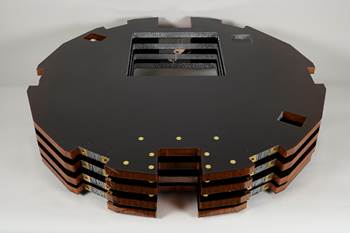Search Results
Showing 51 – 60 of 453 results
The wind energy market has long been considered the world’s largest market, by volume, for glass fiber-reinforced polymer (GFRP) composites — and increasingly, carbon fiber composites — as larger turbines and longer wind blades are developed, requiring higher performance, lighter weight materials. The outer skins of wind and tidal turbine blades generally comprise infused, GFRP laminates sandwiching foam core. Inside the blade, rib-like shear webs bonded to spar caps reinforce the structure. Spar caps are often made from GFRP or, as blade lengths lengthen, pultruded carbon fiber for additional strength.
Space-grade Strato panels line was incorporated into the small spacecraft platform’s solar array substrate/backup structure assemblies design, reducing costs, lead time and meeting positional tolerance without fixtures.
An MOU signed with Bermuda-based Paradise Mobile develops stratospheric 4G/5G connectivity solutions for the region using the composite Zephyr solar-powered aircraft.
Solar Orbiter’s carbon fiber composite, titanium layered solar shield guides heat away from the spacecraft and can withstand up to 970º F (521º C).
CubeSats have become key to space exploration and R&T development, though they are often expensive to build and launch. Funded efforts like the DiskSat program aim at mitigating these challenges.
The composites-intensive HAWK30 solar-powered unmanned aircraft features solar panels on the wings and has been designed to fly at high altitudes for long periods of time.
Solvent-free surface functionalization technology uses low amounts of chemistry and little energy to prime composites and dissimilar materials prior to bonding in addition to other functionalities.
AERO Sustainable Material Technology sponsorship sustainably safeguards the carbon fiber body of the car from degradation, further contributes to team placement.
Joint technology breaks barriers to bonding lightweight flexible solar panels to roofing structures made from aluminum, coated steel and composites.
The solar-powered, carbon-neutral unmanned aircraft system (UAS) will support and progress the development of digital connectivity in Saudi Arabia.
New players proliferate, increasing CMC materials and manufacturing capacity, novel processes and automation to meet demand for higher part volumes and performance.










